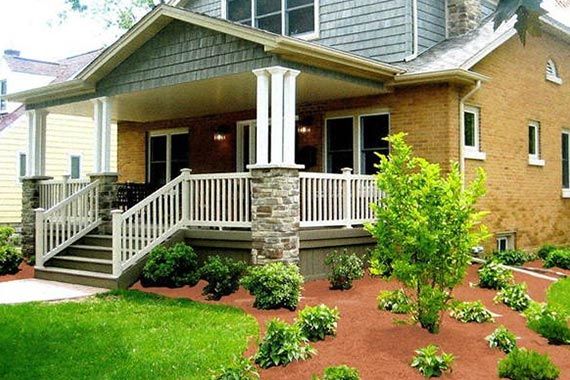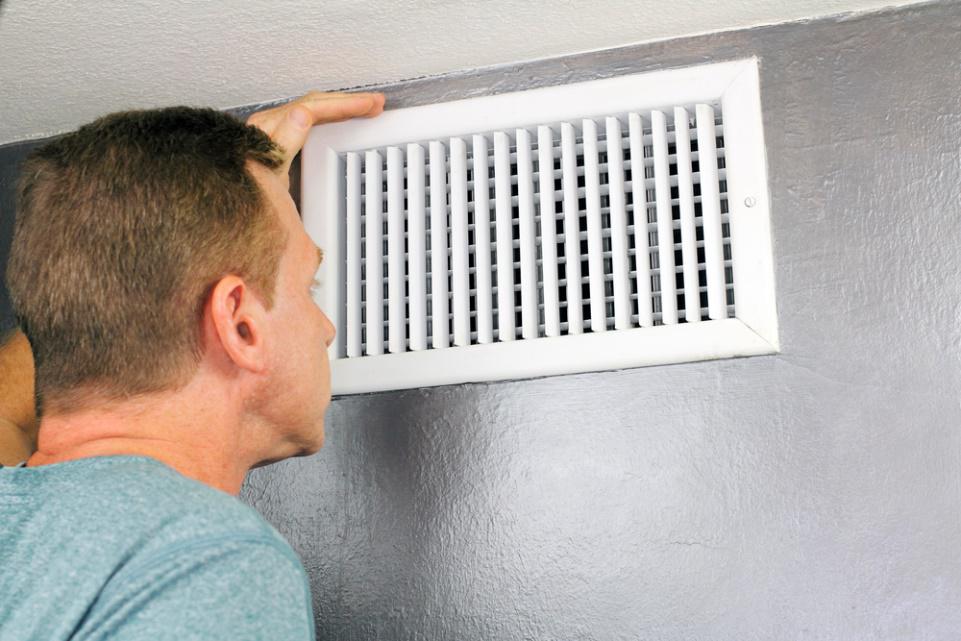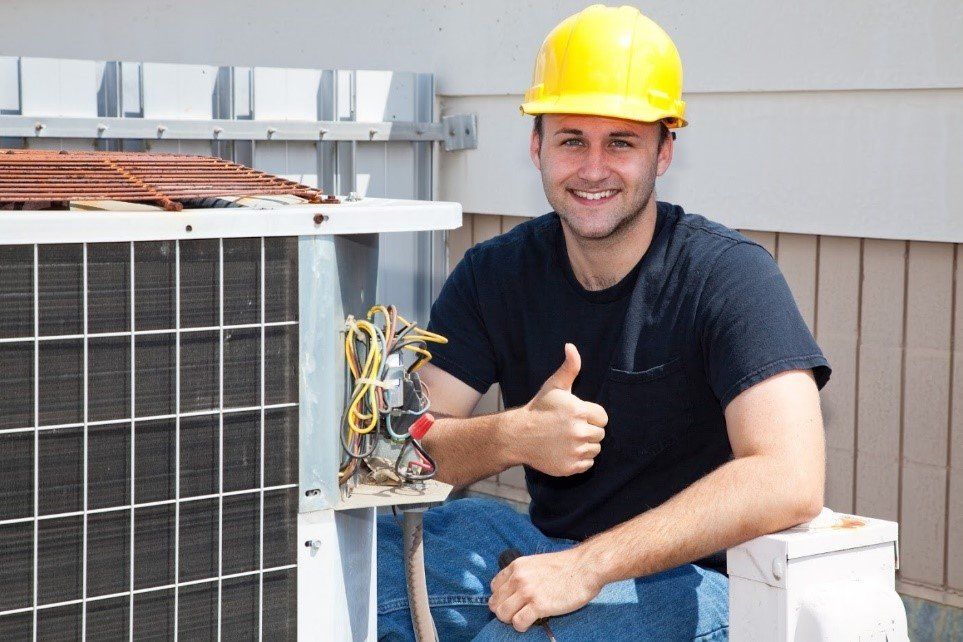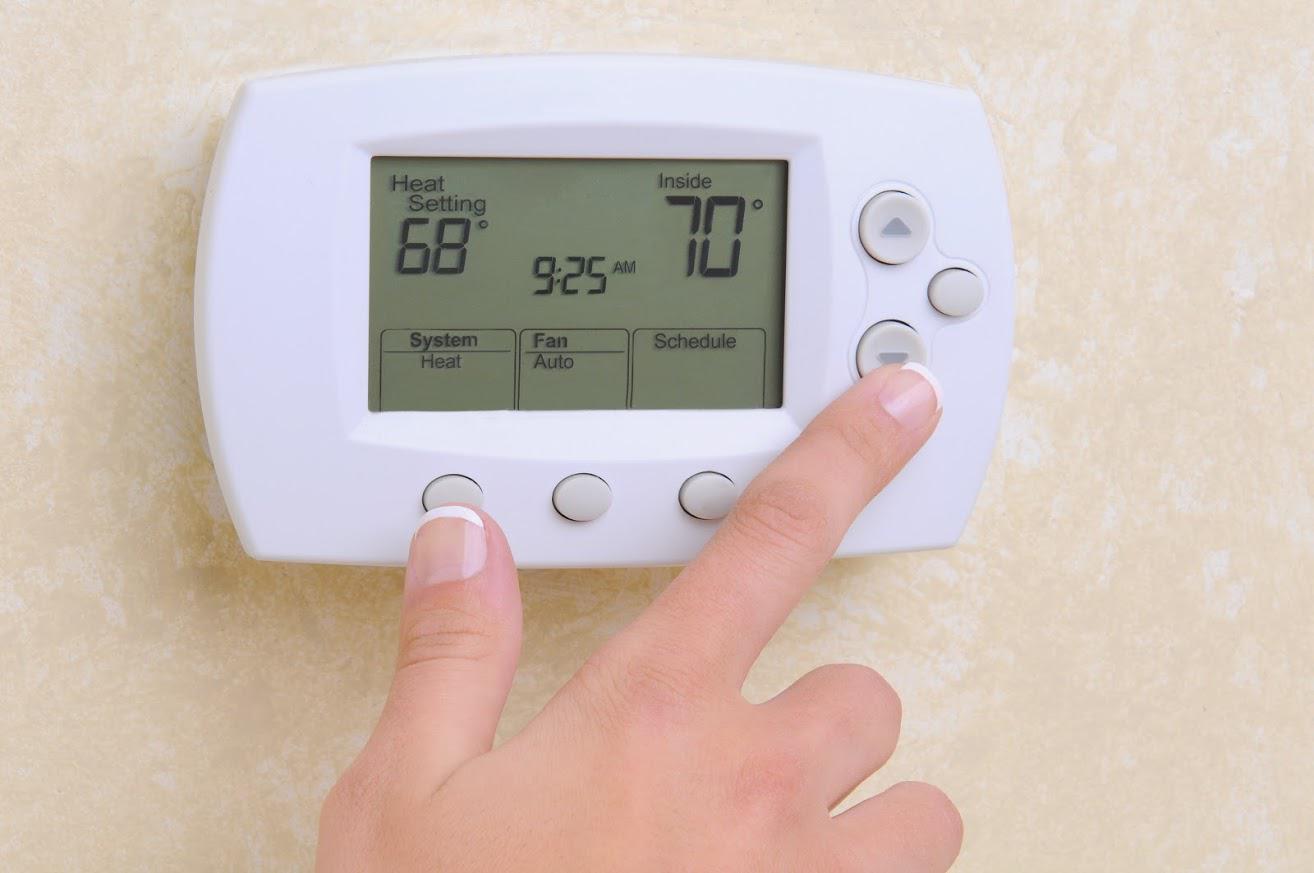What You Should Know About The Transition To R-410A
- By Admin
- •
- 22 Jan, 2018
- •

If you're in the market for a new HVAC system, you might notice that the refrigerant it uses may be different from what's used in your current system. Today's residential HVAC systems rely on R-410A, a newer and more eco-friendly type of refrigerant that's seeing widespread use throughout the HVAC industry.
R-410A is currently replacing R-22 as the refrigerant of choice for modern HVAC systems. Read on to discover why this change is taking place and the impact it will have on your next HVAC replacement.
What Is R-410A?
Marketed under the brand names Puron and Suva 410A, R-410A is a refrigerant specifically designed as an environmentally friendlier alternative to R-22 and other hydrochlorofluorocarbon (HCFC) refrigerants. Developed and patented during the early 1990s, R-410A was first used in residential air conditioning units in 1996.
R-410A's hydrofluorocarbon (HFC) composition helps it stand out from its older HCFC-based counterpart. HFCs lack chlorine, a chemical element that breaks down ozone into oxygen. Recent studies have shown that HCFCs can have a significantly negative impact on the ozone layer when released into the atmosphere.
Why Are Manufacturers Making the Switch?
For decades, HVAC manufacturers have relied on R-22 refrigerant for its effectiveness in air conditioners and heat pumps. That all changed with the introduction of the 1987 Montreal Protocol and subsequent changes in EPA regulations. Since then, the EPA has ordered a phase-out of CFC and HCFC production as well as a phase-out of equipment using CFC and HCFC refrigerants.
Since January 1, 2010, HVAC manufacturers have been banned from building HVAC systems that come pre-charged with R-22 refrigerant. The gradual phase-out process will also bring an end to R-22 production and other HCFC-based refrigerants in 2020, leaving only existing stocks of R-22 and supplies scavenged from older HVAC equipment.
The ultimate goal of the EPA is to completely eliminate HCFC production and importation by 2030. The HVAC industry has since adapted by introducing HVAC systems that use R-410A and other ozone-friendly refrigerants.
What Are the Benefits of Using R-410A?
A major benefit of R-410A is its relatively low impact on the environment when compared to HCFC refrigerants. Unlike R-22, R-410A poses little to no harm to the ozone layer. As more R-22 HVAC systems are retired in favor of R-410A HVAC units, you won't have to worry about the prospect of a refrigerant leak contributing to a hole in the ozone layer.
Protecting the ozone layer isn't the only benefit that R-410A offers over R-22. R-410A excels over its older and less eco-friendly counterpart in several areas, including:
Better efficiency. R-410A absorbs and moves more latent heat than R-22 due to its higher relative pressure and refrigeration capacity. The end result is a refrigerant that's more efficient at heating and cooling than R-22.
Improved longevity. R-410A uses synthetic lubricant instead of mineral oils, resulting in less wear and tear on compressors and other components.
Better availability. The widespread adoption of R-410A HVAC equipment has made stocks of the new refrigerant much easier to find than R-22.
HVAC systems that use R-410A are also less expensive to maintain than comparable R-22 HVAC systems.
Can You Use It in Your Old HVAC System?
R-410A and R-22 are completely incompatible with one another due to differences in lubricant and operating pressures. This means your HVAC technician won't be able to drop R-410A into a system that's already using R-22. Mixing both refrigerants into the same system can cause serious damage to your HVAC equipment.
However, you could convert your R-22 HVAC system into one that uses R-410A as long as the proper components are replaced. The compressor, evaporator coil, and condenser coil must be replaced with components rated for use in R-410A HVAC systems. Otherwise, your old components won't be able to withstand the higher-pressure refrigerant.
What If You Want to Keep Using R-22?
If you want to hold on to your R-22 HVAC unit a bit longer, you'll have plenty of options at your disposal. One option is the use of alternative refrigerants that offer a drop-in replacement for R-22. While some refrigerants offer a direct replacement with no changes necessary, others may require a complete change in lubricant due to compatibility issues.
In prior years, HVAC manufacturers have also used a regulatory loophole to sell R-22 HVAC units without violating EPA regulations. These dry charged R-22 HVAC units were sold without refrigerant, requiring technicians to charge the unit using their own refrigerant. Sales of dry charged HVAC units ended in 2016 due to tightened regulations.
With supplies of R-22 steadily dwindling due to the mandated phase-out, the costs of keeping your old HVAC system in good shape will increase dramatically. You're better off replacing your current HVAC system with one that uses widely available refrigerants like R-410A. The experts at Hartman Heating, Air and Fireplaces can help you find an HVAC system that's a good match for your home.

If you are struggling with hot and cold rooms in your home, read on to learn more about common causes and possible fixes for these variations.

Read on to learn more about creosote, how it affects your fireplace, and the steps you can take to keep your fireplace in good condition.
What Is Creosote?
Creosote is a combination of tars and various other chemicals produced as a byproduct of burning wood or fossil fuels. Small amounts of creosote mingle with the smoke that rises to the top of the flue. Along the way, the creosote combines with moisture and adheres to the flue liner or open brickwork of the chimney, creating a thin layer of tar that solidifies as it cools.
Creosote has had plenty of interesting uses throughout history, including as the active component of various medicines. These days, creosote is used in commercial applications to treat and preserve wood for increased longevity and durability. Creosote is responsible for giving smoked meats their distinctively smoky flavor, plus it's also the special ingredient behind artificial liquid smoke flavoring.
Why Is It Dangerous?
Creosote buildup never goes away on its own. Once a layer of creosote forms, it's there for good until it's physically removed. Without proper cleaning, multiple layers of creosote will steadily build up every time you use your fireplace. This buildup causes the flue to narrow, reducing the amount of ventilation available to your fireplace.
The resulting lack of fresh air prevents your fireplace from burning its fuel efficiently, resulting in a smaller, dirtier flame that causes even more creosote buildup. The cycle continues until your flue becomes completely blocked with creosote, rendering your flue liner unusable.
Creosote is also highly flammable, especially when it accumulates in large amounts. Excess amounts of creosote can ignite when exposed to enough heat from your fireplace. Creosote-fueled fires can spread quickly and with little to no warning, making these fires incredibly dangerous. Failure to clean excess creosote buildup is a common factor behind most home heating fires, according to research from the National Fire Protection Agency.
How Does It Form?
There are several stages to creosote buildup. Each successive stage can prove more difficult to deal with than the last, which highlights the importance of tackling creosote buildup at its earliest stages. How soon creosote buildup occurs usually depends on several factors, including the efficiency and overall condition of your fireplace. If you're using a wood fireplace, the quality of the wood being used as fuel can also affect creosote buildup.
First Stage
Creosote buildup starts out as a light coating on the flue. Depending on how efficiently your fireplace burns its fuel, the creosote buildup will mostly consist of soot with small amounts of tar mixed together. As a result, the initial stage of creosote buildup appears thin and flaky.
The first stage of creosote buildup is always the easiest to deal with. Fireplace technicians can remove creosote buildup using special-purpose brushes, preventing additional, harder-to-remove layers from forming.
Second Stage
As the creosote buildup continues, the soot is replaced with more tar, giving the creosote a thicker, harder, and sometimes shinier appearance. The overall texture of the buildup remains dry and crumbly, however.
Brushing alone won't remove second-stage creosote buildup. Rotary loops and chemical solvents are the usual go-to tools for fireplace technicians when battling creosote buildup at this stage.
Third Stage
Left to its own devices, the creosote buildup eventually turns into a highly concentrated mass that appears oily and feels sticky when fresh. Repeated exposure to heat usually gives this mass a hardened, shiny appearance. At this stage, a simple cleaning may be extraordinarily difficult, if not impossible. Some technicians even encourage a complete replacement of the flue liner as a more cost-effective alternative to cleaning.
How Can It Be Prevented?
Since it's a naturally occurring byproduct of the combustion process, there isn't much you can do to completely stop creosote buildup in its tracks. However, taking a proactive stance on fireplace maintenance will help prevent excessive creosote buildup.
Fireplace technicians can spot and take preventive action against the beginnings of excessive creosote buildup during regularly scheduled fireplace checkups. These checkups also ensure that the flue's inner mechanisms are working properly, significantly reducing the rate of creosote buildup.
Most experts recommend having your fireplace inspected on an annual basis. Flue cleanings should be done when there's a 1/8-inch deposit of creosote in the flue.
Prevention is always the key when it comes to creosote buildup. The sooner you can tackle the buildup, the easier it'll be to deal with. To learn more about the effects of creosote buildup or to schedule a professional inspection, contact us at Hartman Heating , Air and Fireplaces today.

From supplementing your HVAC system in the winter to adding an appealing focal point in any room, you have several reasons to install gas or wood fireplace in your home. Have you decided that a fireplace is a great investment but are not sure if a gas or wood model is the best option for your home, family, and budget?
Do not agonize over this decision. Instead, here are a few tips and factors to help you determine if you should choose a gas fireplace or a wood fireplace for your home.
Cost of Installation
The cost to install either a gas or wood fireplace is dependent upon several factors. You have two common types of gas fireplaces in homes: gas inserts and built-in models. You install a gas insert inside an existing firebox, while you install a built-in in the wall. With the built-in fireplace, you do not need to have a firebox already in your home.
A freestanding wood stove typically costs less to install a traditional built-in wood fireplace. This is because if you opt for a built-in wood fireplace, you pay for the cost of labor and components, including the masonry.
You have other factors that impact the cost of installing either a gas or wood fireplace. If you lean toward gas, you will need to install a new propane or natural gas line if one does not already exist. Additionally, you will need to decide if you want to install a ventilation system.
For wood fireplaces, you will need to factor in the cost of replacing an existing fireplace, including the surround and firebox, and the price of installing a new chimney or repairing the existing chimney.
Cost of Fuel
The typical fuel source for a gas fireplace is either natural gas or propane. The price of either will vary throughout the year depending upon several factors, including supply, the time of year, petroleum prices, and state of the economy.
Because prices and availability fluctuate, contacting a professional to help you determine which option is best for you is a great way to ensure you choose the right product.
The costs to install either a built-in or gas insert model are about the same.
The cost of fuel for a wood fireplace is typically much less, especially if you have a readily available supply of trees on your property. The cost of wood is far less than natural gas or propane, but this can be more time-consuming to gather, cut, stack, and store the wood. Keep this in mind, especially if you do not have a place to store wood on your property.
Cost of Maintenance
The cost to maintain a wood fireplace is typically higher. If you choose a wood-burning stove, you will need to clean it periodically and schedule an appointment to have a professional inspect the unit at least two to three times per year. If the wood stove does not properly combust the fuel, the stove will not run efficiently. Maintaining a built-in wood fireplace will also cost more on average.
In addition to inspecting and cleaning the firebox, you will also need to have a professional inspect the chimney at least once a year . Luckily, you have professionals who can handle these jobs and will ensure that your built-in wood fireplace is also in amazing shape.
A gas fireplace is typically very easy to maintain and care for. If the fireplace has vents, hiring a professional to inspect and clean it at least once a year will prevent clogs.
The Look of Gas or Wood
The aesthetic appeal and the homeowner's taste is a huge factor when considering whether to pick gas or wood. If you have a more modern home, a sleek glass fireplace is a great option. You have several varieties of built-in and insert fireplaces, including models that feature glass logs, stones, or coal. You can even purchase a gas fireplace with a remote control.
If you have a more traditional home or simply prefer the classic elegance of a brick or stone facade and mantel, consider a wood fireplace. Many homeowners also prefer the smell and feel of a traditional built-in wood fireplace as well.
Resale Value
A recent survey of homeowners found that as many as 40 percent would pay more for a home that features a fireplace. Whether you choose gas or wood, installing a beautiful fireplace in your home is always a smart investment. If you want to sell your home in the future, ask a local real estate agent about which type of fireplace that homeowners in your area prefer.
From the potential resale value they add to the cost of installation and maintenance, several factors exist that you should consider when deciding to choose a gas or wood fireplace for your home. If you have any further questions, contact the professionals at Hartman Heating, Air and Fireplaces .












